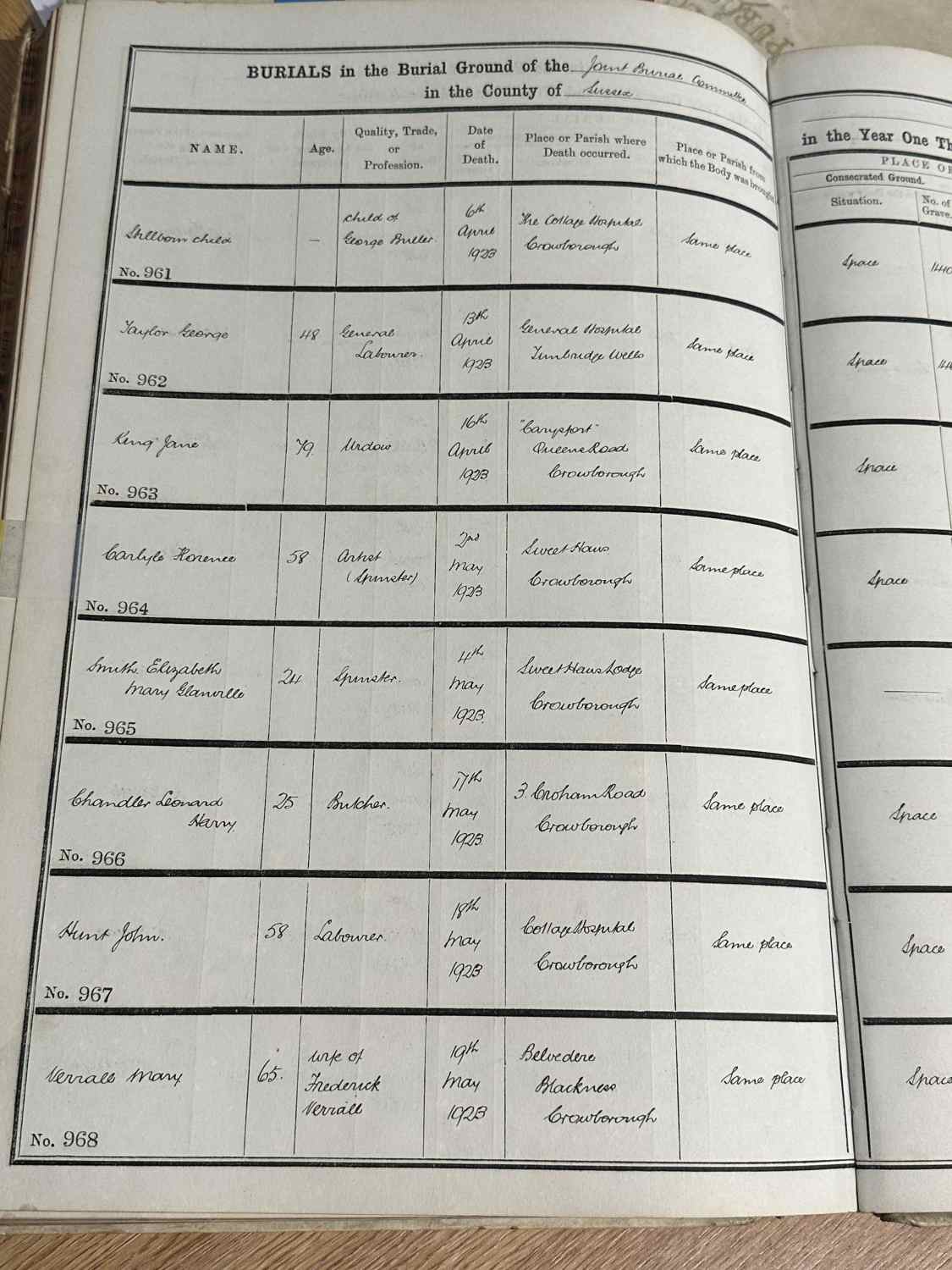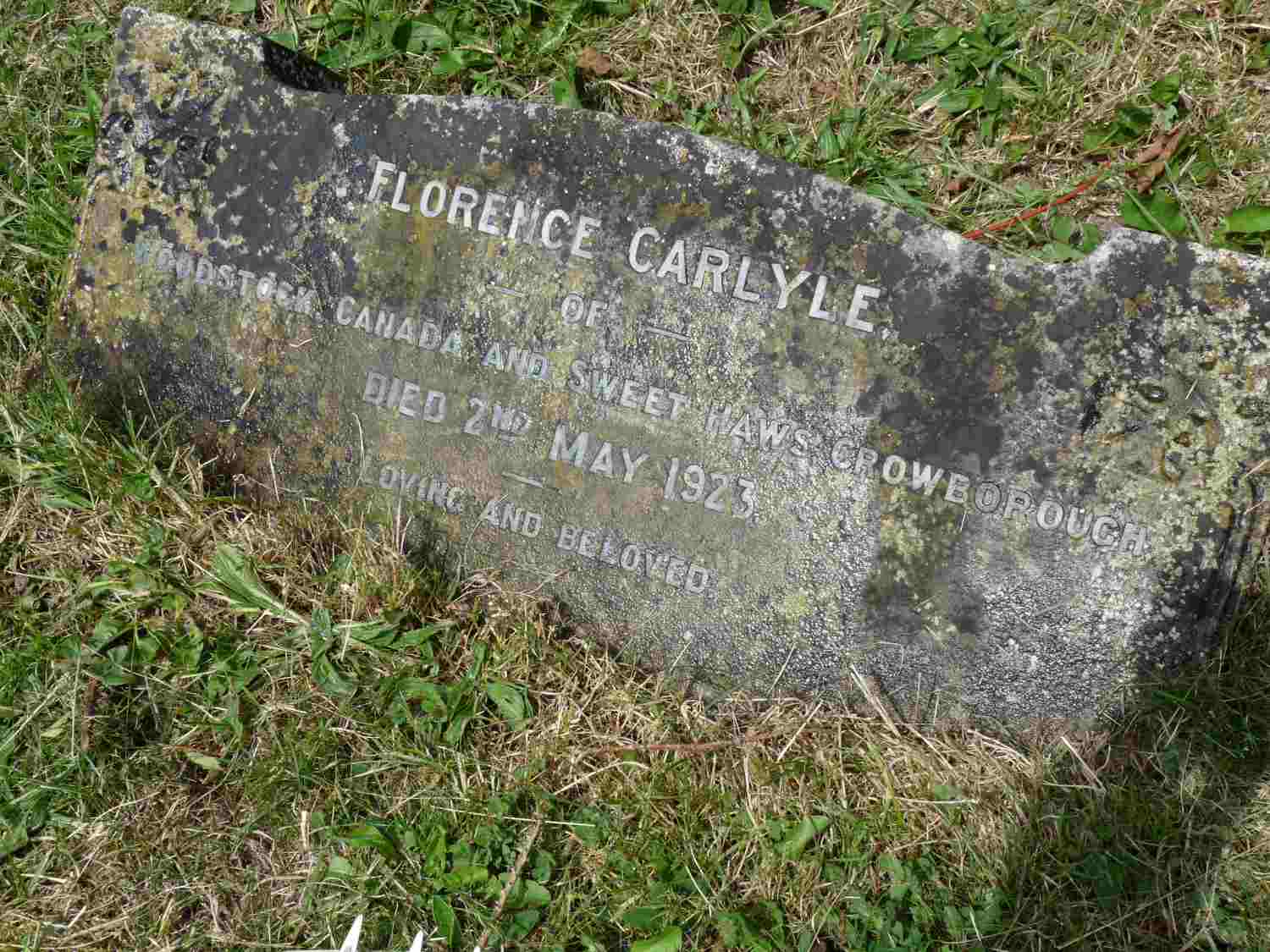Finding Florence: Searching for Florence Carlyle's Resting Place
Finding Florence: Searching for Florence Carlyle's Resting Place
By Megan Lockhart, Archives Technician
We love a good mystery at the Oxford County Archives, especially one that can be solved and provide us with an opportunity to work with our exceptional worldwide community of colleagues in the archival and cultural heritage fields! When staff at the Woodstock Art Gallery reached out to us earlier this year with a request for help with finding the final resting place of local artist Florence Carlyle, I couldn’t wait to take on this special research project. The location of where Carlyle was buried has been unknown for many years. It was known, however, that after leaving her hometown of Woodstock, Ontario, she lived out the rest of her adult life in England, where she eventually passed away at her home with her longtime friend and potential life partner Juliet Hastings. Whether or not she was buried in England remained a mystery for a long time.

Portrait of Florence Carlyle, from Wikimedia Commons courtesy of the Archives of Ontario [I0007832]
Before I delve into the whole story, I’ll provide a bit of background on Carlyle. Florence Carlyle was born in 1864 in Galt, Ontario. As a young girl, Florence moved to Woodstock with her family where she developed an interest in art at school. Wanting to encourage her daughter to develop her talent and explore her interests further, her mother began organizing art classes in Woodstock and even established an art studio at 369 Simcoe Street. In 1883, Florence had her artwork on display at the Ladies Department of the Toronto Industrial Exhibition (now the Canadian National Exhibition better known as the CNE). It was there that she gained recognition for her talent internationally when the Duke and Duchess of Argyll, from the United Kingdom, purchased one of her pieces.
In later years, Florence studied art in Paris, France, under the tutelage of internationally acclaimed Canadian artist Paul Peel. Despite her recognized talent, she struggled to find an academy in Paris that accepted women. She eventually attended the Académie Delécluse which strongly supported female artists and provided more space for female students than male students. Florence finished her studies at the prestigious Académie Julian. She was granted permission to exhibit a painting at the Paris Salon (the official art exhibition of the Académie des Beaux-Arts) in 1893, a dream for many artists. In 1896 she returned to Woodstock where she set up her own studio, another in London, Ontario, and eventually one in New York City. A year later she became the first woman to be elected an Associate at the Royal Canadian Academy of Arts.
It has been speculated by historians that Florence was part of the 2SLGBTQIA+ community and that Florence’s long-term roommate and travel companion, Juliet Hastings, was her romantic partner. Florence met Juliet in England in 1911. By 1913, the pair had settled together in a cottage known as “Sweet Haws” in Crowborough, England after travelling throughout Europe and were lifelong companions thereafter. Juliet also acted as Florence’s model for many of her paintings. Carlyle eventually passed away in the cottage in 1923 after several years of illness. Many of Carlyle’s artworks are part of the permanent collection at the Woodstock Art Gallery.
Returning to the main portion of this story and the big question: was Carlyle buried in England or was her body brought back home to Ontario, Canada? After spending a few weeks researching I was able to find the answer, and the journey to get to the answer was an interesting one! My search first began online, using the Family Search website and Ancestry. While it is important to keep accuracy in mind when using web resources like this, I find they are often great starting points when little information is available to you. I had success in finding the 1923 Death Registration for Carlyle, which listed her as being 58 at the time of her death, and confirmed that her death was registered in Uckfield, a town not very far from her residence in Crowborough. Utilizing the records we have available to us at the Archives, I was very certain that she was not buried in Oxford County, Ontario, and was likely buried somewhere in East Sussex, England. I was also able to find the probate for her assets online which furthered confirmed her residence as Crowborough, East Sussex. Her death was registered on May 2, 1923; unsurprisingly, the probate was assigned to Juliet.

This may sound silly, but sometimes a good old “Google search” can also be helpful. An article popped up written by a former staff member at the McIntosh Gallery at Western University which contained valuable biographical information on Carlyle, including a note that Carlyle was buried in a cemetery not far from where she lived in East Sussex. This was exciting as it was the first confirmation I saw that she was buried in England! I got in touch with a staff member at the Gallery who provided me with a list of resources used for the article that mentioned that Carlyle was buried in England (thank you Luvneet!). This gave me further hope that I should be able to narrow down her burial location.
I began looking to determine if there are any archives located in the Crowbourgh area. This led me to “The Keep” and one of its partners: the East Sussex and Brighton and Hove Record Office. I had my fingers crossed that someone at the Record Office would be able to track down burial records for her. Drew at the Record Office was exceptionally helpful as, despite not having the Crowborough Church burial registry in their records, he suggested contacting the Crowborough Town Council directly and offered to have someone take a photo of her grave if the plot number was available.
My next step was working with the Allotments & Cemeteries Officer, Clair Gilbert, with the Crowborough Town Council. Using burial records, Clair was able to confirm that Carlyle was buried in the Herne Road Cemetery in Crowborough and provided the exact plot number. Finally receiving that confirmation was so thrilling! Clair kindly offered to send me photos of the grave itself and I also received photos of the grave from Steve Selby, a colleague of Drew at The Keep. Carlyle’s headstone is small and unassuming, despite being larger than life herself as a female pioneer in the art world during the 19th century. Her connection to Woodstock is noted on the grave. It also includes a simple and moving message: “Loving and beloved”.

The Burial Registration for Florence Carlyle, courtesy of the Crowborough Town Council

Florence Carlyle's grave, courtesy of the East Sussex Records Office
After a few weeks of “detective work” we finally have the answer to where Carlyle was laid to rest, and our records have now been updated. Without the assistance of several wonderful individuals, I’m afraid I never would have found the answer! I am very thankful for their help, time, and advice and am also thankful for the technology we have today to stay connected with others globally. The enthusiastic willingness to lend a helping hand that I continually witness from the GLAM (Galleries, Libraries, Archives, Museums) community never ceases to inspire me.
I want to thank the following people for their help with my research, and Mary Reid at the Woodstock Art Gallery for sending me on this interesting journey:
- Luvneet Rana at the McIntosh Gallery/Western University
- Drew and Steve Selby at the East Sussex and Brighton and Hove Record Office/The Keep
- Clair Gilbert and The Crowborough Town Council
During my research, I was led to a new question – where exactly was the “Sweet Haws Cottage” located in Crowborough? Was it on Sweet Haws Lane somewhere, and if so, is it still standing today? That is another mystery for another time!
